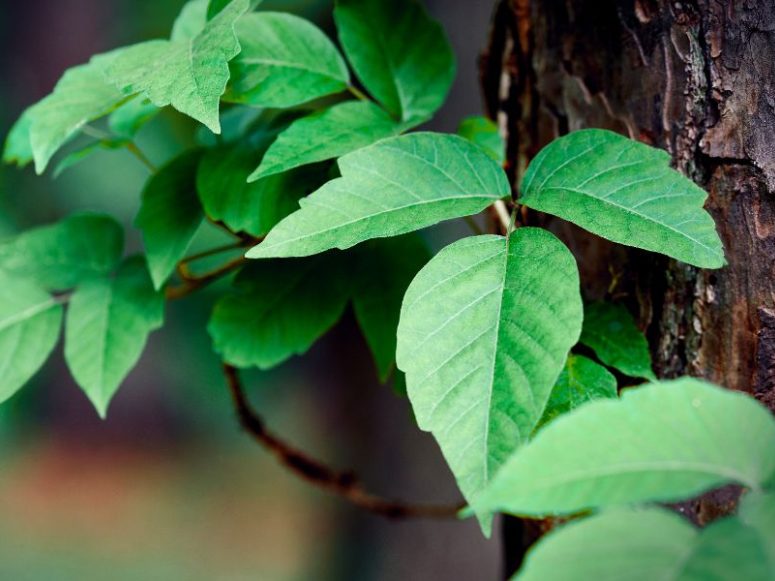Ah, the great outdoors! Nature's beauty is unmatched, offering us tranquility and adventure. But lurking among the lush greenery are the infamous trio: poison ivy, poison oak, and poison sumac, ready to leave you itchy and uncomfortable.
These plants can turn a peaceful excursion into an itchy ordeal with just a brush against their leaves.
So, what to do when the red, itchy rash appears?
Thankfully, Mother Nature offers remedies just as effective as the pharmaceuticals without the prickly side effects.
In this post, we'll explore natural ways to soothe your skin and speed recovery. From cool oatmeal baths and refreshing aloe vera gels to handy kitchen items like baking soda and apple cider vinegar, I've got you covered with tips that are as gentle as they are resourceful. Let’s dive into these natural solutions and reclaim your comfort, empowering you to enjoy the beauty of the great outdoors again.
And remember, if the itchiness becomes too much to handle or you’re unsure about a rash, a visit with one of our knowledgeable primary care providers can ensure you're on the right path to relief!
Identifying Poison Ivy, Oak, and Sumac
Recognizing these plants is the first step to prevention. Let’s break it down:
- Poison Ivy: Easily remembered by the catchy saying, “Leaves of three, let them be.” Poison ivy is often a vine, though it can grow as a shrub. Its glossy, almond-shaped leaves grow in clusters of three. Watch out for their reddish hue in spring and colorful display in fall.
- Poison Oak: Sharing the same rule with poison ivy, poison oak also sports leaves in threes. However, it boasts a bushier appearance, with leaves that closely resemble those of an oak tree, with rounded lobes. It, too, changes color with the seasons, turning vibrant shades from green to orangey-red.
- Poison Sumac: A bit trickier, as it typically grows in swampy or wet habitats. Unlike its relatives, it has rows of paired leaflets — 7 to 13 per stalk, with pointy tips and smooth edges. Its berries, white and draped beneath the leaves, offer a telltale sign of its presence.
Each of these plants produces urushiol oil, a sticky, allergenic substance. Simply touching the oil can trigger an irritating rash that may take days to develop. Watch your step around wooded areas, shrublands, and along riverbanks where these plants often thrive.
When in doubt, admire these plants from a safe distance and if you've had a run-in, a quick chat with our providers can help confirm what you're up against.
Symptoms of Exposure
Encountering poison ivy, oak, or sumac can transform your skin into a canvas of discomfort. The primary culprit? An itchy, red rash that often heralds the unwelcome arrival of symptoms. This rash can vary from mild irritation to a severe itch, depending on your sensitivity.
Accompanying this itchy annoyance, you may notice swelling. This swelling can sometimes lead to blisters, small bubbles of fluid that may ooze. While it may be tempting, resist the urge to scratch as this can prolong the healing process and even lead to an infection.
Symptoms generally begin to appear within a day or two after exposure. The duration of these symptoms can last anywhere from one to three weeks. However, the timeline may vary depending on the individual's reaction and the amount of exposure.
Addressing these symptoms early is crucial.
Quick intervention can significantly reduce the severity and duration of your discomfort. If you catch the rash early and apply remedies promptly, you stand a better chance of minimizing the itch and shortening the experience.
Remember, while natural treatments can provide relief, our team is always here to assist you with managing any stubborn symptoms and ensuring a comfortable recovery.
How to Get Rid of Poison Ivy, Oak, and Sumac Naturally
Jewelweed Salve or Poultice
Jewelweed is often found growing near these pesky plants and offers a natural remedy. Known for its anti-inflammatory properties, a salve or poultice can bring soothing relief. To make it, crush fresh jewelweed leaves and apply the paste directly to the rash. Alternatively, simmer the leaves in water to create a soothing wash.
Oatmeal Baths or Baking Soda Paste
Oatmeal isn’t just for breakfast!
An oatmeal bath can calm your skin and reduce itching. Simply grind a cup of oats into a fine powder, sprinkle it into a lukewarm bath, and soak for 15-20 minutes.
Alternatively, create a baking soda paste by mixing with water until it forms a thick consistency. Apply directly to affected areas for quick relief.
Apple Cider Vinegar Compress
This pantry staple packs a punch as a mild antiseptic. To make a compress, soak a clean cloth in diluted apple cider vinegar (a 1:1 ratio with water) and gently press onto the rash. This can help alleviate the itch and promote healing.
For extra relief, you might want to try dabbing on aloe vera gel or using a cold compress. And if you happen to have some calamine lotion around, it can also be a trusty additive to your natural remedy toolkit.
Prevention and When to Seek Help
Preventing contact with poison ivy, oak, and sumac can save you from the discomfort of an itchy rash. Start by wearing long sleeves, pants, and gloves when in areas where these plants thrive. Consider treating your clothes with barrier-blocking products that help keep pesky oils at bay.
If you suspect you've encountered these plants, washing your skin promptly with soap and cool water can help remove urushiol oil. Be sure to clean any gear or clothing as well, using soap and water or special cleansers designed to break down oils. Remember, urushiol can linger on surfaces and clothing, spreading the rash even after initial contact.
In some cases, it's important to seek professional help. If your rash covers a large area, shows signs of infection, or appears on your face or genitals, it's time to call a doctor. These situations may require medical intervention to ensure proper healing.
Here at Som Medical Practice, our primary care providers are ready to assist you. Whether you're dealing with a severe rash or seeking preventive advice, scheduling an appointment can ensure you get the personalized care and guidance you need. Don’t hesitate to reach out and take the next step toward comfort and recovery.










